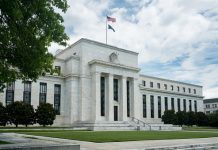Key insights from the week that was.
The past week has had a clear focus on monetary policy, the most notable events being the RBA and ECB September meetings.
Given the significant downward revisions made to forecasts of Q3 GDP growth recently by Westpac and many other market participants, how the RBA would adapt their planned taper program was front of mind on Tuesday. As detailed by Chief Economist Bill Evans, the RBA chose to go ahead with the immediate taper from $5bn to $4bn this month, but to then delay the next review until February 2022 (previously November). Holding purchases at $4bn per week from November to February instead of reducing the pace to $3bn will result in around $13bn in additional purchases, $2bn more than would have been seen had purchases been held at $5bn September to November, then progressively tapered to zero.
This modest increase in cumulative purchases to February 2022 highlights the RBA view current conditions as materially weaker than anticipated back in July and August, when the program was announced then affirmed, but it also signals they continue to believe a strong recovery is coming, with the economy seen “back around its pre-Delta path in the second half of next year”.
Westpac agrees, anticipating a 7.4% gain for GDP over 2022, driven by a sharp fall in the unemployment rate to its full-employment level, circa 4.0%. Critical to this outturn will be a successful re-opening, with strong confidence in virus suppression and the effectiveness of vaccines.
Our latest Market Outlook in conversation podcast and September Market Outlook provide an in-depth view of our expectations and the risks related to these views.
Also discussed in this edition of the podcast is the current state of China’s property market. Recently, COVID-19, significant structural reform in the sector and the precarious financial position of Evergrande, one of China’s largest developers, has seen fears over the sector and the economy grow rapidly. While aggressive action will have to be taken to resolve Evergrande’s predicament, COVID-19’s threat to the sector and the economy looks to have already receded. Meanwhile, we believe the structural changes being implemented by authorities are actually a positive for 2022 and beyond.
By rationalising and reforming the sector end-to-end from land sales to construction, authorities hope to put developers on a stronger financial footing and to better target the planning process to increase the share of homes available to the rising middle class and lower-income communities. In doing so, developers addressable market should expand materially and growth in the sector become more stable through time. Price growth should also be kept in check, improving affordability and hence households’ quality of life.
All of the recent reforms in China have the same intent behind them: to rapidly grow job and investment opportunities for households and to preserve their discretionary spending power so that, through time, the consumption basket can be expanded and wealth increased. Any hit to growth in the near-term caused by these reforms and keeping the nation safe from COVID-19 will be paid back many times over.
Turning to Europe and the ECB. President Lagarde and the Governing Council were non-committal on asset purchases at the September meeting, deferring the decision on a formal taper program to the December meeting. However, as of today, they judge “that favourable financing conditions can be maintained with a moderately lower pace of net asset purchases under the PEPP than in the previous two quarters” and “will purchase flexibly according to market conditions and with a view to preventing a tightening of financing conditions”. Further, if “favourable financing conditions can be maintained with asset purchase flows that do not exhaust the envelope… the envelope need not be used in full”. We take from these comments that we may see a small reduction in purchases before the December meeting to gauge how quickly purchases can be reduced thereafter.
Very clearly, the ECB Governing Council have the confidence they need in the recovery to take these steps. GDP growth is seen at 5.0% in 2021, 4.6% in 2022 and a still above-trend 2.1% in 2023. From a structural perspective, 2021’s 5.0% gain will be sufficient to take GDP back to its pre-pandemic level; thereafter, given potential growth in Europe is circa 1.5%, if the ECB’s forecasts are achieved, GDP will quickly converge back to its pre-pandemic potential path.
What is also clear however is that inflation is expected to keep disappointing. Upstream price pressures have only pushed headline inflation marginally above the 2.0%yr target recently, and this outperformance is expected to be fleeting. By 2023, inflation is seen materially below the ECB’s target at 1.5%. We hold a similar view to the ECB regarding inflation on the Continent, which is why we see the Euro peaking in early 2022 against the US dollar and thereafter steadily falling to end-2023, as the US FOMC raises rates (from December 2022) while the ECB remains on hold.












